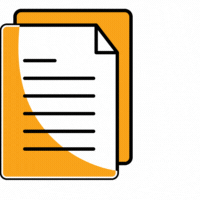Faktor yang Mempengaruhi Pemberian Asi Eksklusif
Factors Correlation Exclusive Breastfeeding
DOI:
https://doi.org/10.35473/ijm.v7i1.3254Keywords:
ASI eksklusif, pengetahuan, tingkat pendidikanAbstract
Exclusive breastfeeding is the provision of breast milk alone to infants up to 6 months without additional fluids or other foods and beverages such as water, formula, orange, honey, tea water, or solid foods such as bananas, papaya, milk porridge, biscuits, rice porridge, and teams. Exclusive breastfeeding for 6 months is recommended by international guidelines based on scientific evidence of the benefits of breast milk for the baby, mother, family, and country. The purpose of this study was to determine the factors that influence exclusive breastfeeding. This research method uses simple random sampling, respondents were selected by random sampling as many as 95 respondents. The results of this study obtained respondents who did exclusive breastfeeding as many as 62 people (65%) and not exclusive breastfeeding as many as 33 people (35%). Based on the results of Chi-Square analysis, it was found that there was a significant relationship between the level of knowledge (p = 0.001), age (p = 0.036), and education level (p = 0.001) with exclusive breastfeeding. Increase knowledge with health promotion and counseling about the benefits and process of exclusive breastfeeding.
Abstrak
Dalam Bahasa Indonesia ditulis melingkupi 200-500 words. Font Size 11, Times New Roman, spasi Tunggal
ASI eksklusif adalah pemberian ASI saja pada bayi sampai 6 bulan tanpa tambahan cairan ataupun makanan lain makanan dan minuman lain yang dimaksud misalnya air putih, susu formula, jeruk, madu, air teh, atapun makanan padat seperti pisang, pepaya, bubur susu, biskuit, bubur nasi, dan tim. Pemberian ASI eksklusif selama 6 bulan dianjurkan oleh pedoman internasional yang didasarkan pada bukti ilmiah tentang manfaat ASI baik bagi bayi, ibu, keluarga, maupun negara. Tujuan dari penelitian ini adalah untuk mengetahui faktor yang mempengaruhi pemberian ASI eksklusif. Metode penelitian ini menggunakan simple random sampling, responden dipilih secara random sampling sebanyak 95 responden. Hasil penelitian ini didapatkan responden yang melakukan pemberian ASI Eksklusif sebanyak 62 orang (65%) dan tidak ASI Eksklusif sebanyak 33 orang (35%). Berdasarkan hasil analisis Chi-Square didapatkan adanya hubungan yang signifikan antara tingkat pengetahuan (p = 0,001), usia (p = 0,036), dan tingkat pendidikan (p = 0,001) dengan pemberian ASI Eksklusif. Meningkatkan pengetahuan dengan promosi kesehatan dan penyuluhan tentang manfaat dan proses pemberian ASI Eksklusif.
Downloads
References
Atabik, Ahmad. Faktor Ibu Yang Berhubungan Dengan Praktik Pemberian ASI Eksklusif Di Wilayah Kerja Puskesmas Pamotan. Semarang: Unnes Juornal of Public Health.
Elham, Eslami, Sedigheh Pakseresht, Maryam Nikmani, and Zahra Atrkar Roshan. “Comparing of Brestfeeding Sel-Efficacy in Mothers with Different Ages.” Jurnal of holistic nursing and midwifery 30(4): 208 – 216. https://doi.org/10.32598/jhnm.30.4.1096.
Hamze, Layar, Jing Mao., and Elizabeth Reifsnider. “Knowledge and Attitudes towards Breastfeeding Practices : A Cross-Sectional Survey of Postnatal Mother in China.” Midwifery 74: 68 – 75. https://doi.org/10.1016/j.midw.2019.03.009.
Haryono, R, and S Setianingsih. Manfaat ASI Eksklusif Untuk Buah Hati Anda. Yogyakarta: Gosyen Publishing.
Jones, Jessica R et al. “Factors Associated with Exclusive Breastfeeding in the Unite State.” Pediatrics 128(1117): 1125.
Laksono, Agung Dwi, Ratna Dwi Wulandari., Mursyidul Ibad., and Ina Kusrini. “The Effects of Mother’s Education on Achieving Exclusive Breastfeeding in Indonesia.” BMC Public Health 21(14).
Lindawati, Refi. “Hubungan Pengetahuan, Pendidikan Dan Dukungan Keluarga Dengan Pemberian ASI Eksklusif.” Faletehan Health Jurnal 6(1): 30 – 36.
Listyaningrum, T.U.dan Vidayanti, and V. “Tingkat Pengetahuan Dan Motivasi Ibu Berhubungan Dengan Pemberian ASI Eksklusif Pada Ibu Bekerja.” Jurnal Ners dan Kebidanan Indonesia 4(2): 55–62.
Novita, Regina V T. Keperawatan Maternitas Cetakan I. Bogor: Ghalia Indonesia.
Ogbo, F A, A Page, and J Idoko. “Breastfeeding in Nigeria.” BMC public health 18(1): 247. https://doi.org/10.1186/s12889-018-5145-y.
Ouyang, Y Q, and S R Redding. “A Survey on Difficulties and Desires of Breastfeeding Women in Wuhan China.” Midwifery 37: 19 –24.
Pangestika, Eka. “Hubungan Tingkat Pendidikan Ibu Dengan Praktik Pemberian Asi Eksklusif Pada Ibu Yang Melahirkan Di RSUD Wates Kulon Progo. Skripsi. STIKES Jenderal Achmad Yani.”
“Peraturan Pemerintah RI Nomor 33 Tahun 2012 Tentang Pemberian Air Susu Ibu Eksklusif.”
Prasetyono, Ds. Buku Pintar Asi Eksklusif. Yogyakarta: Diva Press.
Rahmayani, Reni Okta, Awal Isgianto, and Elza Wulandari. Hubungan Usia Ibu Dengan Pemberian ASI Eksklusif Pada Bayi Di Wilayah Kerja Puskesmas Bentirin Kota Bengkulu. Bengkulu: Universitas Tri Mandiri Sakti.
Roesli. Panduan Inisiasi Menyusui Dini Plus Asi Eksklusif. Jakarta: Pustaka Bunda.
Sakti, E S. Menyusui Sebagai Dasar Kehidupan Tema Pekan ASI Sedunia 1-7 Agustus 2018. Jakarta: Pusat Data dan Informasi.
Setegn, T, T Belachew, and M Gerbaba. “Factors Associated with Exclusive Breastfeeding Practices among Mothers in Goba District, South East Ethiopia: A Cross-Sectional Study.” International Breastfeeding Journal 7(1): 17. https://doi.org/10.1186/1746-4358-7-17.
Suherni, S. Perawatan Masa Nifas. Yogyakarta: Fitramaya.
Suradi. Pemberian ASI Eksklusif Dan Kolostrum. Jakarta: EGC.
Suradi, R, and H K P Tobing. Bahan Bacaan Manajemen Laktasi. Jakarta: Perinasia.
Tim Nasional Percepatan Penanggulangan Kemiskinan. “100 Kabupaten/Kota Prioritas Untuk Intervensi Anak Kerdil (Stunting.” Jakarta Pusat. Diakses pada tanggal. http://www.tnp2k.go.id/images/uploads/downloads/Buku Ringkasan .
WHO, World Health Organization. “Exclusive Breastfeeding for Optimal Growth, Developmentand Health of Infants.” https://apps.who.int/nutrition/topics/exclusive_breastfeeding/en/index.html.
Downloads
Published
How to Cite
Issue
Section
License
Copyright notice:
- Authors retain copyright and grant the journal right of first publication with the work simultaneously licensed under a Creative Commons Attribution License that allows others to share the work with an acknowledgement of the work's authorship and initial publication in this journal.
- Authors are able to enter into separate, additional contractual arrangements for the non-exclusive distribution of the journal's published version of the work (e.g., post it to an institutional repository or publish it in a book), with an acknowledgement of its initial publication in this journal.


